Completion requirements
2. Setting the stitch density
The
density of the fabric is related to the positions of the cams from the
knitting systems, which are controlled by the motors 1 shown in the
figure.
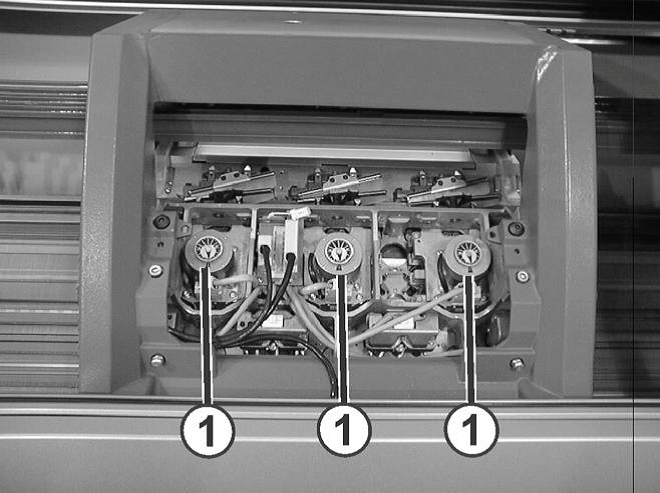
The
densities are adjusted individually for individual areas in the
pattern, which are pre-separated, e.g. the edges of fabric (fade-out) or a
motif from the program, as well as when using different yarns
(correction due to the number of threads).
In flat knitting machines, the stitch densities are divided into static and dynamic (PTC). By static all needles from the row have the same values, while by dynamic - different densities can be set for individual groups of loops from one row.
The stitch density of the fabric can be made in control columns Front stitch length and/or Back stitch length. Right-click on the column and select one of the values listed in the window: 1=9.0, 2=10.0, 3=10.0, 4=12.0, 20=9.0 and so on.
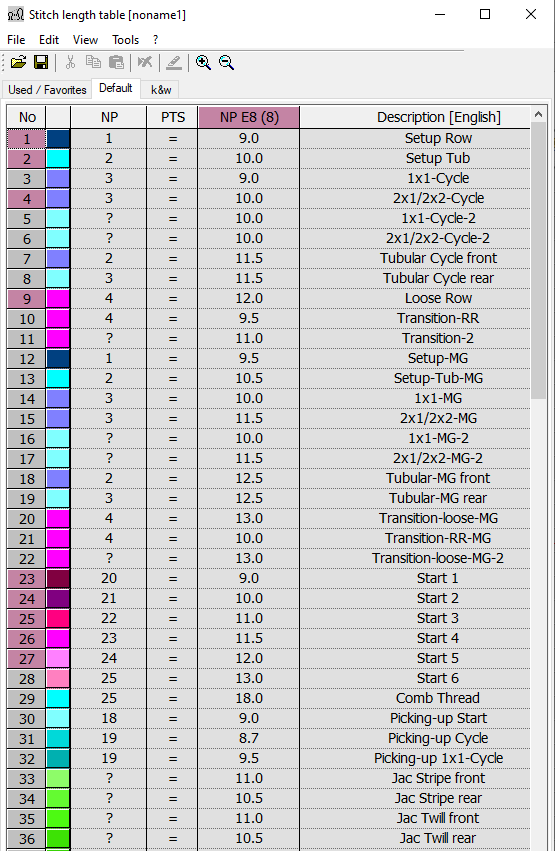
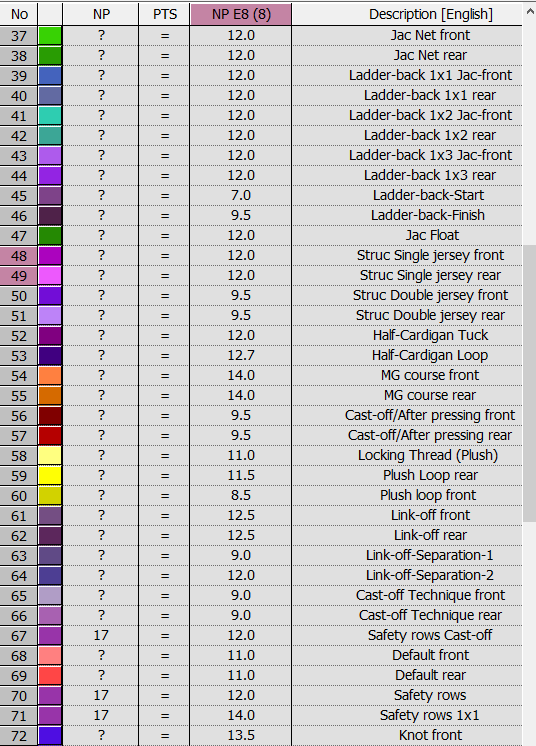
The behavior for a stitch length change in a row is specified in the column PTC.

The following possibilities are available for selection:
- Selection = - the different stitch lengths of two adjacent areas are divided up into equal parts
- Selection ! - the stitch length in this area is to remain unchanged. The stitch tension change is carried out in the adjacent area.
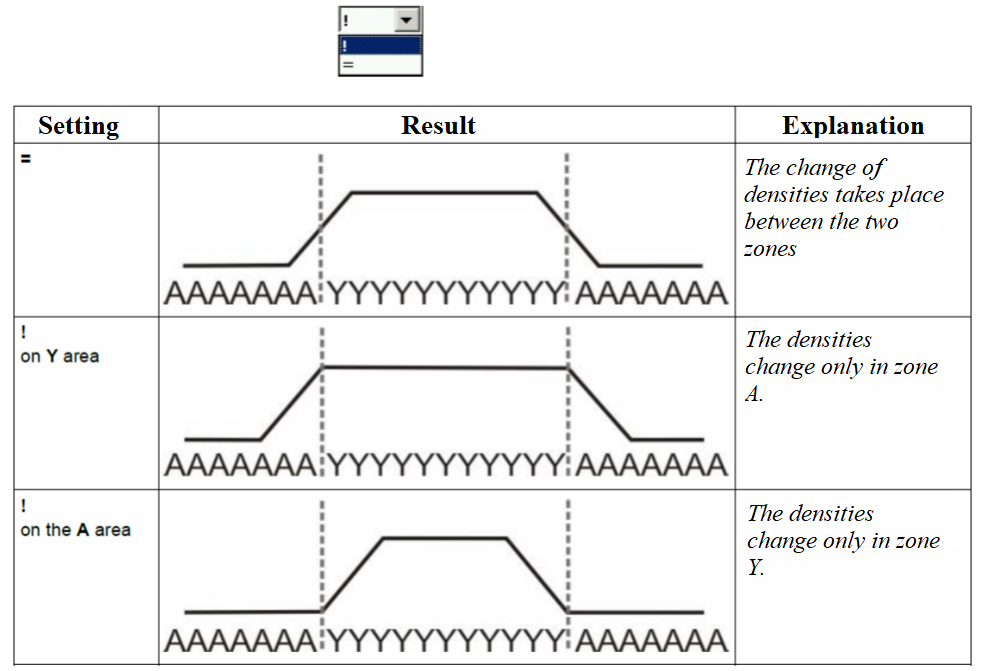
The PTC density is used to balance the difference in the heights of the stitches when knitting single jersey and double jersey stitches in one stitch row. If they are made with the same densities, there will be a visual difference in the size of the stitches. Exemplary values for the densities when knitting single jersey are between 11.0 to 12.0, and the choice depends mainly on the gauge of the machine and the yarn being worked with.
The number of needles for which the density change can be made depends on the gauge of the machine and the machine speed. Please, see the next graph!
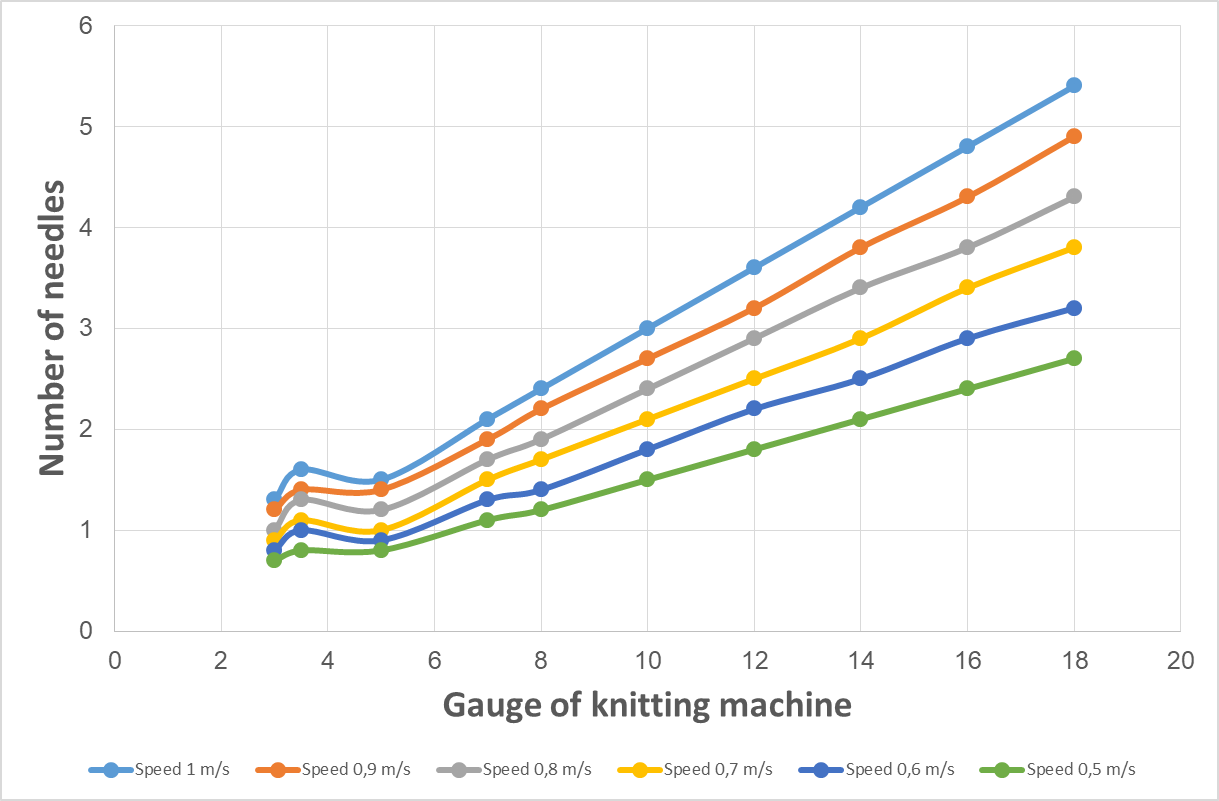
Setting different densities are done following the next steps:
- Selecting the area we want to be of different density
- Call the density table
- Activate the FIND REPLACE function from the drawing tools

Video for setting the stitch density:
